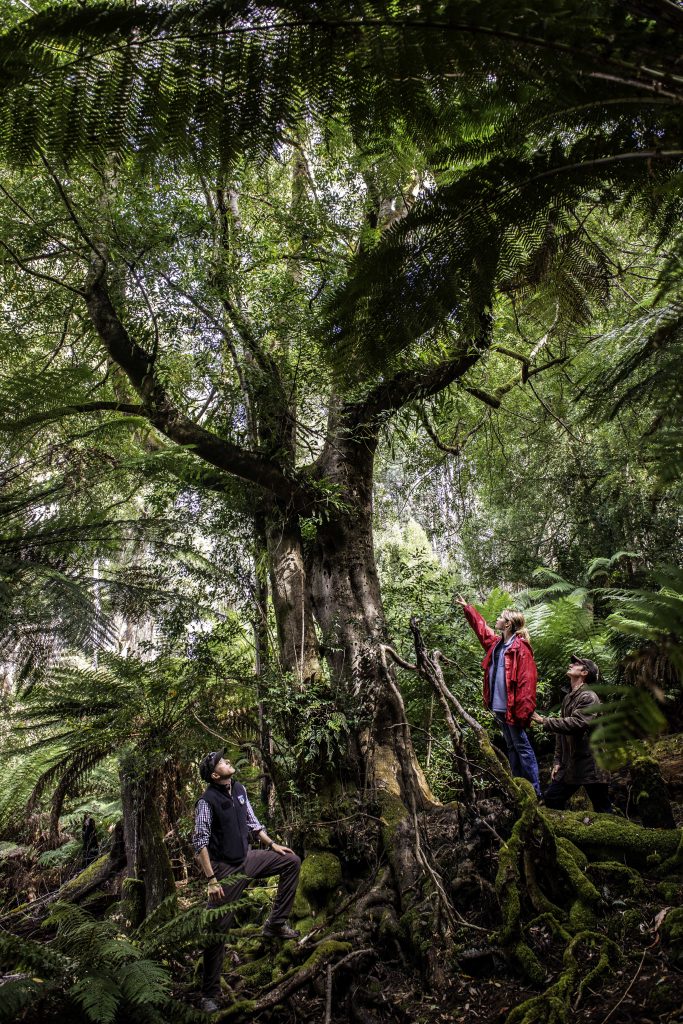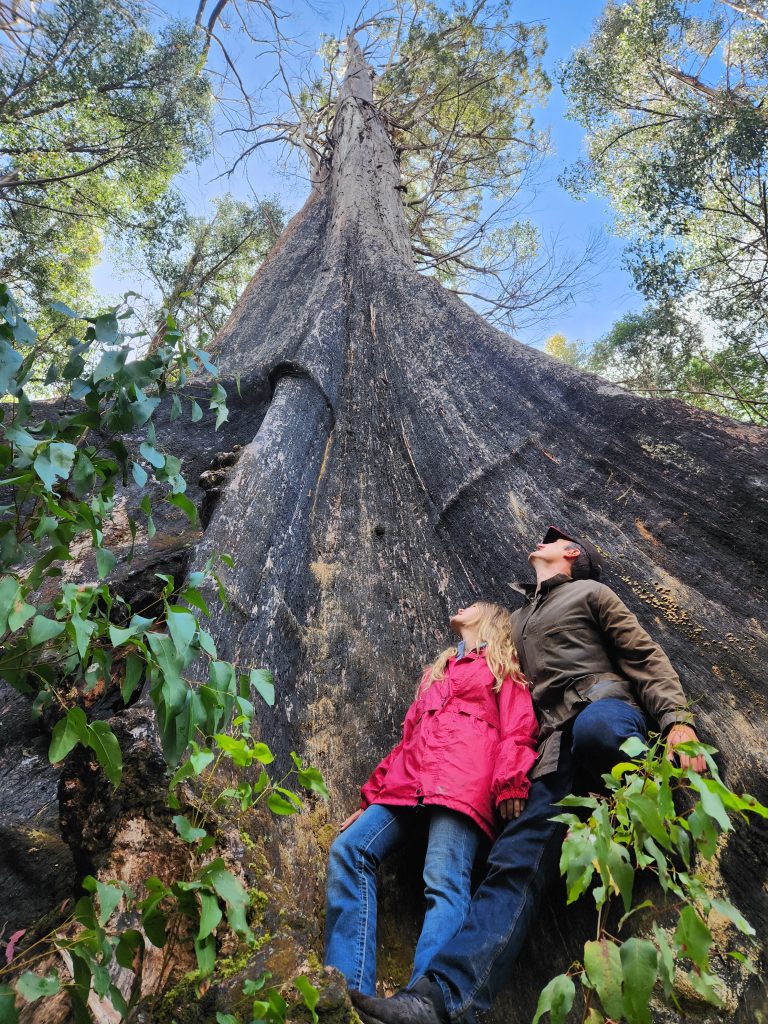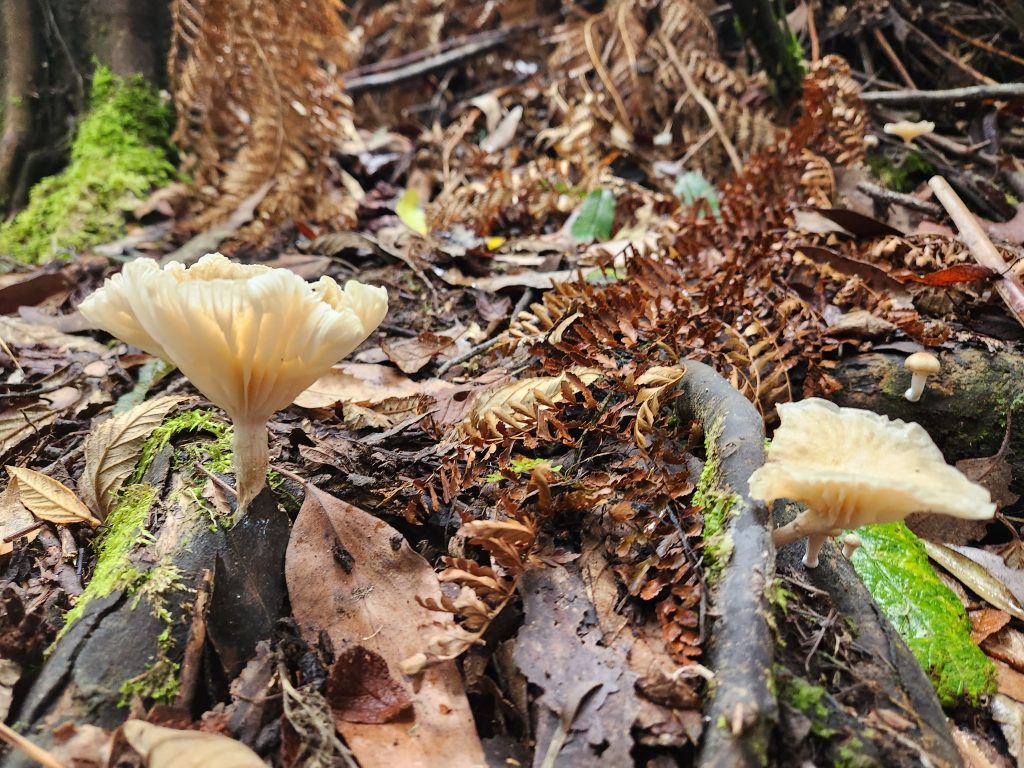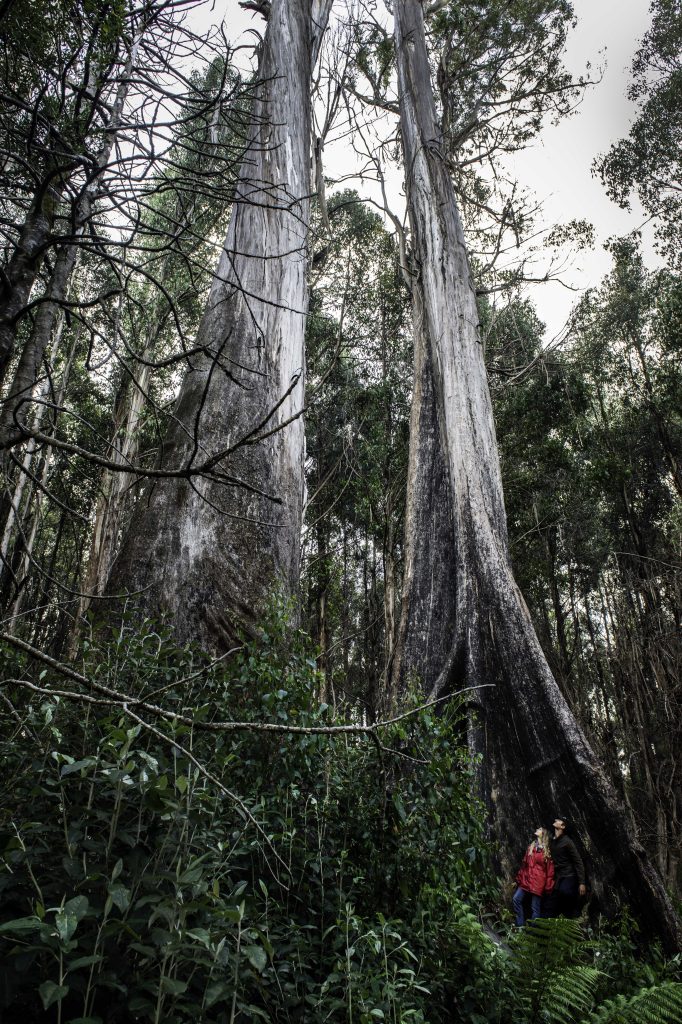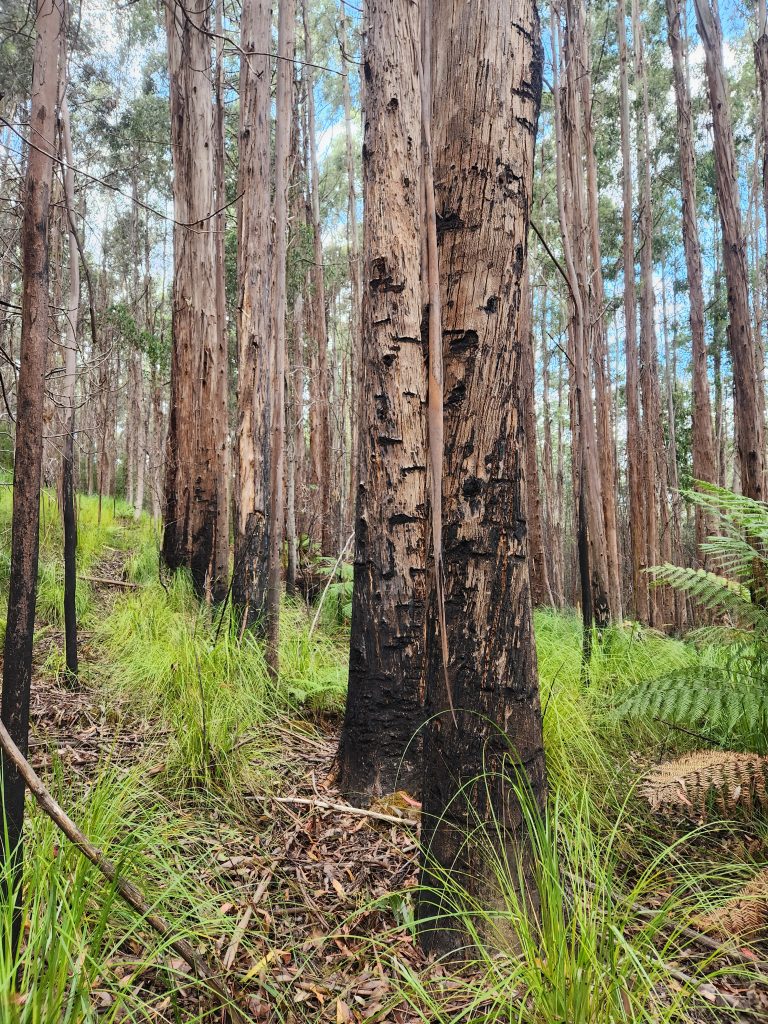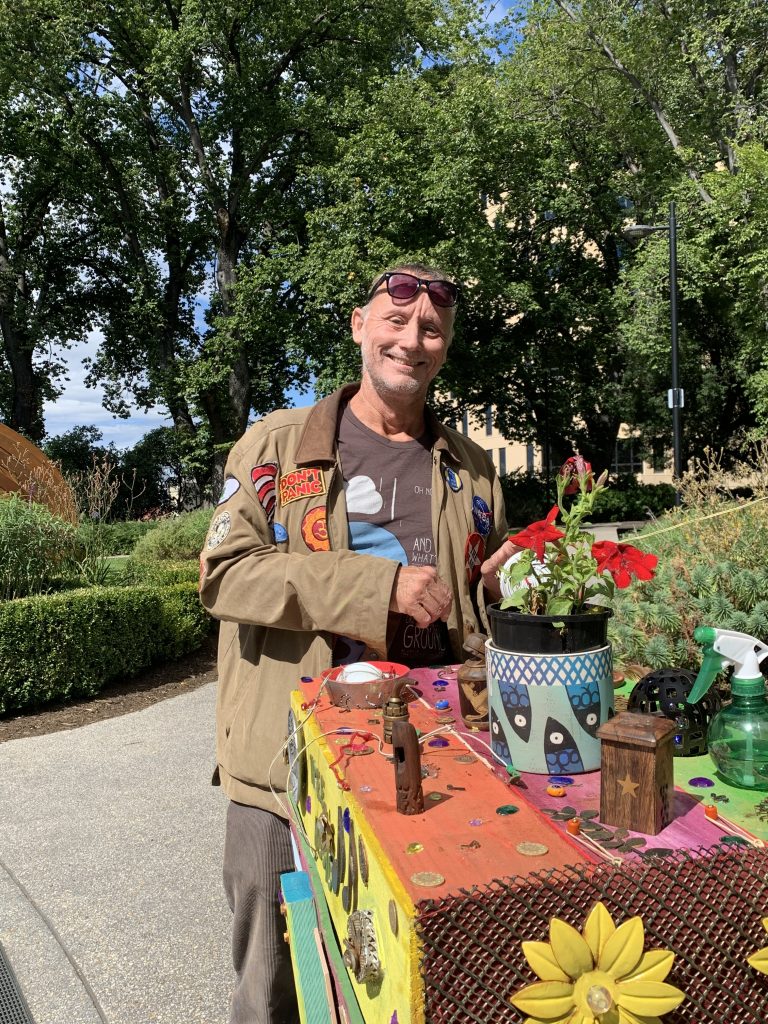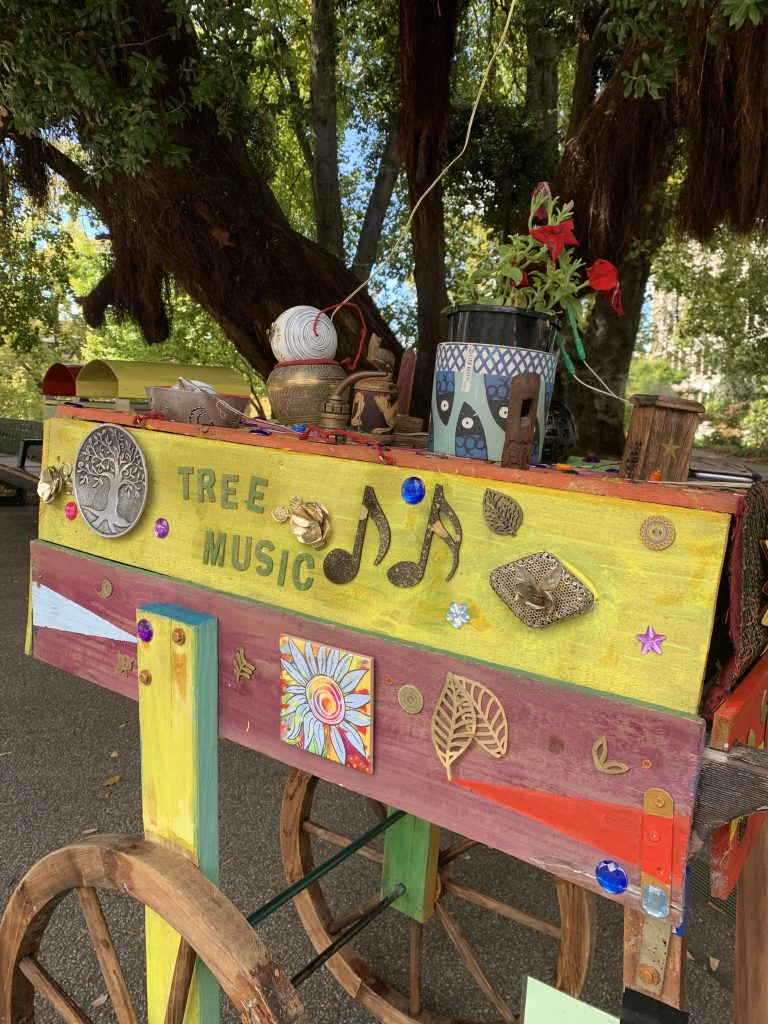As a secondary student in the US State of Ohio, Yoav Daniel Bar-Ness enjoyed getting outdoors but never imagined there was an opportunity to build a career around it. Yoav studied forestry and wildlife sciences as an undergraduate in Seattle and began specialising as a research tree climber. His first arrival in Tasmania in 2002 was as a research student at UTAS, but he did not expect his roots would venture so deep into the Tasmanian soils. Yoav met his Tasmanian wife at uni and now they have three children.
Today he is a scientist, tree climber, writer, explorer and founder and operator of Giant Tree Expeditions. Yoav and his team ran their first eco tours immediately before the devastating fire events of early 2019. Yoav has a commercial tourism permits and receives cooperation from Sustainable Timbers Tasmania (previously Forestry Tasmania).
As a plant-based geneticist, Yoav was set on his mission to champion Tasmania’s giant trees as unique, world-class tourist attractions.
‘I’m motivated to bring people out to see these amazing forest giants to help them experience the charm and magic of what are arguably the world’s superlative flowering forests, and for them to hopefully carry that magic with them for the rest of their lives.
‘When we go on a Giant Tree Expedition, the ancient geology and plant evolutionary history are the basic steps to understand what we see around us, Yoav explains.
‘The things we experience are not just Tasmanian in their human or cultural sense, but rather Tasmanian in the sense of ‘this is different from everywhere else’. It’s really something special!
On a perfect Tasmanian autumn day, I left Hobart with Yoav and ventured deep into the Huon forests in the Geeveston area, home of the Tahune Airwalk, where you can walk amongst the treetops.
Guided by his sat-nav, Yoav took me along secret forestry roads on a tall tree adventure. 200 metres into the bush we discovered two other young tree hunters, Tori and James from Queensland and invited them to join our expedition. Soon we came across a huge sassafras tree, which Yoav estimated at 350 years old. Its partially-exposed roots were carpeted in thick moss.
We gazed in awe and amazement – this tree was just a seedling around the time that Abel Tasman, Tasmania’s first recorded European explorer, named Van Diemen’s Land (Tasmania) back in 1642.
We sat and breathed in the thickly-scented, musty forest air and aromas and listened respectfully to the quiet of the forest. I felt humbled and restored.
Next we went searching for the mighty swamp gums, Eucalyptus regnans, the kings of the forest. We found two trees, partially-singed from recent fires. We gaze up in awe – and then down to the forest floor, as Yoav points out various species of forest fungi. Our two new companions stand with us at the base of these giants and look towards the top-most canopy, 100 metres overhead.
Another Eucalyptus regnans, the Centurion Tree, is hollow and shows the scars of the recent devastating fire that swept through the Southern Forests in 2019, Tasmania’s second hottest summer on record. But it’s still alive. Scientists like Yoav say that these century-old Tasmanian trees are telling us about our rapidly-changing environment. Surely we need to listen!
Yoav explains that at just over 100 metres high, the Centurion tree is 350 to 400 years old – until a taller swamp gum is measured, this tree is simply the tallest flowering plant on Earth. The Centurion, Yoav says, has seen many changes over its life and has adapted and changed to fires and climate changes. Yoav is interested in the stories the trees can tell us and how closely those stories are interlinked with us. Because of the fires, Yoav is passionate about learning and sharing his knowledge about these magnificent trees before they are lost to another forest fire.
An excellent 2022 ABC podcast produced by Natasha Mitchell is ‘If trees could talk’. The podcast features Yoav and Dr Daniel Chamovitz, a PhD in plant genetics and the author of ‘What a plant knows – a field guide to the senses’. Daniel suggest that because plants move and develop in a different time scale and don’t connect and interact with us like other living organisms, we are blind to their complexity and beauty of their biology.
Daniel believes that plants sense the world around them through touch, taste and even memory and they use all these senses in order to survive and thrive. His experiments with plants suggests plant biology and human biology are actually similar. He says trees can communicate by producing volatile chemicals to warn other trees of an insect attack and that they communicate through a ‘wood wide web’ of fungi connecting their roots and that parent trees can also attack trees that are threatening the welfare of their offspring!
Daniel’s experiments with plants found many ways that plant biology is similar to human biology. He found a key set of genes that plants use to differentiate between light and dark and adjust their growth accordingly and that the same genes were involved in our biological clock also.
Daniel says that the biggest difference between a plant and an animal is that the plant is rooted in one place, so they must be much more in tune to its environment and change its development considering the changes in the environment. That’s why plants are much more complex genetically than an animal.
In Peter Wohlleben’s books ‘The hidden life of trees’ and ‘The heartbeat of trees’ he suggests even though trees don’t have a brain as such, they have millions of root tips where brain-like processes are going on. Plants receive millions of signals daily so it changes its biology to be ideally suited to its environment. Peter explains that plants have been on Earth for 300 million years and have developed their own form of intelligence and are not just working to their genetic code. He says that forests can make their own local weather and reduce the temperature when it’s too hot.
Taking this idea that plants have an ‘intelligence’ I pondered the question ‘Can trees communicate – or even make music? Tasmanian-based artist Dr Mark Lleonart thinks so.
He explains that his artwork transforms the internal electrical activity of plants into synthesized music, ‘branching the human-tree communication gap.’
Mark says that this mobile ‘Tree-Music’ is housed in a ‘musical-festival-chic flower cart’. Mark has been playing a series of pop-up concerts in Tasmania for all to enjoy and he encourages musicians to come and play along.
Mark has a science PhD and became interested in the science of plant communication when he was growing microscopic single-celled plants.
‘Some had eye spots and behaved like animals when they swam towards a light, that really stuck with me,’ he says.
I had to see for myself and sceptical me was gobsmacked when Mark attached two diodes to a nearby tree and music started to waft from his cart! What trickery is this, I wondered? The software that turns the plant’s electrical signals into music is called Plant Choir and through an App you can select different musical instruments.
Mark says that like some musicians, you never know what the plants are going to play.
‘Do the trees respond to the music that’s being played around them?’ I ask.
Mark is sceptical about that, but he does say that the music can get more lively when the plants are sprayed or watered! He says it becomes art when musicians respond and create music in an orchestra with the plant. Mark says that Cygnet harpist Peter Kaukiainen once played his harp and alto-sax in an improvised jazz jam session with a plant!
I’m really curious!
‘Do different species produce different sounds?’ I ask?
‘I attached diodes to a 124 year-old, 21 metre high bunya pine in the Botanical Gardens,’ he tells me. ’The sound was deep, profound and slow. As a general rule, larger trees produce a slower sound.
My head is already spinning, but then Mark casually reveals that you can attach the diodes to two different species that grow close together and harmonise the sounds they create, if they are connected under the ground or if the soil is wet enough!
Yoav’s Giant Tree Expeditions takes group as large as five and larger by special arrangement and of all ages and abilities to experience some of Tasmania’s tallest trees. Yoav says the ancient forests are among the most structurally-complex and amazing environments on Earth. As I discovered, being in their presence and understanding them can be profound, spiritual and life changing. Yoav can also organise delicious and nutritious outdoor picnics.
What a wonderful way to spend a day!

